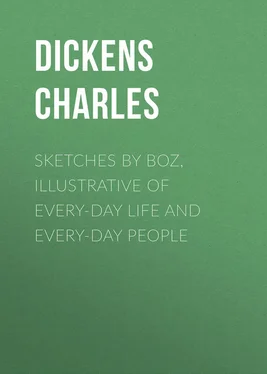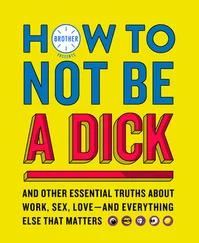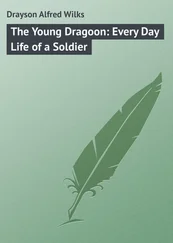Чарльз Диккенс - Sketches by Boz, Illustrative of Every-Day Life and Every-Day People
Здесь есть возможность читать онлайн «Чарльз Диккенс - Sketches by Boz, Illustrative of Every-Day Life and Every-Day People» — ознакомительный отрывок электронной книги совершенно бесплатно, а после прочтения отрывка купить полную версию. В некоторых случаях можно слушать аудио, скачать через торрент в формате fb2 и присутствует краткое содержание. Жанр: foreign_antique, foreign_prose, на английском языке. Описание произведения, (предисловие) а так же отзывы посетителей доступны на портале библиотеки ЛибКат.
- Название:Sketches by Boz, Illustrative of Every-Day Life and Every-Day People
- Автор:
- Жанр:
- Год:неизвестен
- ISBN:нет данных
- Рейтинг книги:3 / 5. Голосов: 1
-
Избранное:Добавить в избранное
- Отзывы:
-
Ваша оценка:
- 60
- 1
- 2
- 3
- 4
- 5
Sketches by Boz, Illustrative of Every-Day Life and Every-Day People: краткое содержание, описание и аннотация
Предлагаем к чтению аннотацию, описание, краткое содержание или предисловие (зависит от того, что написал сам автор книги «Sketches by Boz, Illustrative of Every-Day Life and Every-Day People»). Если вы не нашли необходимую информацию о книге — напишите в комментариях, мы постараемся отыскать её.
Sketches by Boz, Illustrative of Every-Day Life and Every-Day People — читать онлайн ознакомительный отрывок
Ниже представлен текст книги, разбитый по страницам. Система сохранения места последней прочитанной страницы, позволяет с удобством читать онлайн бесплатно книгу «Sketches by Boz, Illustrative of Every-Day Life and Every-Day People», без необходимости каждый раз заново искать на чём Вы остановились. Поставьте закладку, и сможете в любой момент перейти на страницу, на которой закончили чтение.
Интервал:
Закладка:
The exhibitions next in popularity to these itinerant theatres are the travelling menageries, or, to speak more intelligibly, the ‘Wild-beast shows,’ where a military band in beef-eater’s costume, with leopard-skin caps, play incessantly; and where large highly-coloured representations of tigers tearing men’s heads open, and a lion being burnt with red-hot irons to induce him to drop his victim, are hung up outside, by way of attracting visitors.
The principal officer at these places is generally a very tall, hoarse man, in a scarlet coat, with a cane in his hand, with which he occasionally raps the pictures we have just noticed, by way of illustrating his description – something in this way. ‘Here, here, here; the lion, the lion (tap), exactly as he is represented on the canvas outside (three taps): no waiting, remember; no deception. The fe-ro-cious lion (tap, tap) who bit off the gentleman’s head last Cambervel vos a twelvemonth, and has killed on the awerage three keepers a-year ever since he arrived at matoority. No extra charge on this account recollect; the price of admission is only sixpence.’ This address never fails to produce a considerable sensation, and sixpences flow into the treasury with wonderful rapidity.
The dwarfs are also objects of great curiosity, and as a dwarf, a giantess, a living skeleton, a wild Indian, ‘a young lady of singular beauty, with perfectly white hair and pink eyes,’ and two or three other natural curiosities, are usually exhibited together for the small charge of a penny, they attract very numerous audiences. The best thing about a dwarf is, that he has always a little box, about two feet six inches high, into which, by long practice, he can just manage to get, by doubling himself up like a boot-jack; this box is painted outside like a six-roomed house, and as the crowd see him ring a bell, or fire a pistol out of the first-floor window, they verily believe that it is his ordinary town residence, divided like other mansions into drawing-rooms, dining-parlour, and bedchambers. Shut up in this case, the unfortunate little object is brought out to delight the throng by holding a facetious dialogue with the proprietor: in the course of which, the dwarf (who is always particularly drunk) pledges himself to sing a comic song inside, and pays various compliments to the ladies, which induce them to ‘come for’erd’ with great alacrity. As a giant is not so easily moved, a pair of indescribables of most capacious dimensions, and a huge shoe, are usually brought out, into which two or three stout men get all at once, to the enthusiastic delight of the crowd, who are quite satisfied with the solemn assurance that these habiliments form part of the giant’s everyday costume.
The grandest and most numerously-frequented booth in the whole fair, however, is ‘The Crown and Anchor’ – a temporary ball-room – we forget how many hundred feet long, the price of admission to which is one shilling. Immediately on your right hand as you enter, after paying your money, is a refreshment place, at which cold beef, roast and boiled, French rolls, stout, wine, tongue, ham, even fowls, if we recollect right, are displayed in tempting array. There is a raised orchestra, and the place is boarded all the way down, in patches, just wide enough for a country dance.
There is no master of the ceremonies in this artificial Eden – all is primitive, unreserved, and unstudied. The dust is blinding, the heat insupportable, the company somewhat noisy, and in the highest spirits possible: the ladies, in the height of their innocent animation, dancing in the gentlemen’s hats, and the gentlemen promenading ‘the gay and festive scene’ in the ladies’ bonnets, or with the more expensive ornaments of false noses, and low-crowned, tinder-box-looking hats: playing children’s drums, and accompanied by ladies on the penny trumpet.
The noise of these various instruments, the orchestra, the shouting, the ‘scratchers,’ and the dancing, is perfectly bewildering. The dancing, itself, beggars description – every figure lasts about an hour, and the ladies bounce up and down the middle, with a degree of spirit which is quite indescribable. As to the gentlemen, they stamp their feet against the ground, every time ‘hands four round’ begins, go down the middle and up again, with cigars in their mouths, and silk handkerchiefs in their hands, and whirl their partners round, nothing loth, scrambling and falling, and embracing, and knocking up against the other couples, until they are fairly tired out, and can move no longer. The same scene is repeated again and again (slightly varied by an occasional ‘row’) until a late hour at night: and a great many clerks and ’prentices find themselves next morning with aching heads, empty pockets, damaged hats, and a very imperfect recollection of how it was they did not get home.
CHAPTER XIII – PRIVATE THEATRES
‘Richard the Third. – Duke of Glo’ster 2 l. ; Earl of Richmond, 1 l ; Duke of Buckingham, 15 s. ; Catesby, 12 s. ; Tressel, 10 s. 6 d. ; Lord Stanley, 5 s. ; Lord Mayor of London, 2 s. 6 d. ’
Such are the written placards wafered up in the gentlemen’s dressing-room, or the green-room (where there is any), at a private theatre; and such are the sums extracted from the shop-till, or overcharged in the office expenditure, by the donkeys who are prevailed upon to pay for permission to exhibit their lamentable ignorance and boobyism on the stage of a private theatre. This they do, in proportion to the scope afforded by the character for the display of their imbecility. For instance, the Duke of Glo’ster is well worth two pounds, because he has it all to himself; he must wear a real sword, and what is better still, he must draw it, several times in the course of the piece. The soliloquies alone are well worth fifteen shillings; then there is the stabbing King Henry – decidedly cheap at three-and-sixpence, that’s eighteen-and-sixpence; bullying the coffin-bearers – say eighteen-pence, though it’s worth much more – that’s a pound. Then the love scene with Lady Ann, and the bustle of the fourth act can’t be dear at ten shillings more – that’s only one pound ten, including the ‘off with his head!’ – which is sure to bring down the applause, and it is very easy to do – ‘Orf with his ed’ (very quick and loud; – then slow and sneeringly) – ‘So much for Bu-u-u-uckingham!’ Lay the emphasis on the ’uck;’ get yourself gradually into a corner, and work with your right hand, while you’re saying it, as if you were feeling your way, and it’s sure to do. The tent scene is confessedly worth half-a-sovereign, and so you have the fight in, gratis, and everybody knows what an effect may be produced by a good combat. One – two – three – four – over; then, one – two – three – four – under; then thrust; then dodge and slide about; then fall down on one knee; then fight upon it, and then get up again and stagger. You may keep on doing this, as long as it seems to take – say ten minutes – and then fall down (backwards, if you can manage it without hurting yourself), and die game: nothing like it for producing an effect. They always do it at Astley’s and Sadler’s Wells, and if they don’t know how to do this sort of thing, who in the world does? A small child, or a female in white, increases the interest of a combat materially – indeed, we are not aware that a regular legitimate terrific broadsword combat could be done without; but it would be rather difficult, and somewhat unusual, to introduce this effect in the last scene of Richard the Third, so the only thing to be done, is, just to make the best of a bad bargain, and be as long as possible fighting it out.
Читать дальшеИнтервал:
Закладка:
Похожие книги на «Sketches by Boz, Illustrative of Every-Day Life and Every-Day People»
Представляем Вашему вниманию похожие книги на «Sketches by Boz, Illustrative of Every-Day Life and Every-Day People» списком для выбора. Мы отобрали схожую по названию и смыслу литературу в надежде предоставить читателям больше вариантов отыскать новые, интересные, ещё непрочитанные произведения.
Обсуждение, отзывы о книге «Sketches by Boz, Illustrative of Every-Day Life and Every-Day People» и просто собственные мнения читателей. Оставьте ваши комментарии, напишите, что Вы думаете о произведении, его смысле или главных героях. Укажите что конкретно понравилось, а что нет, и почему Вы так считаете.












